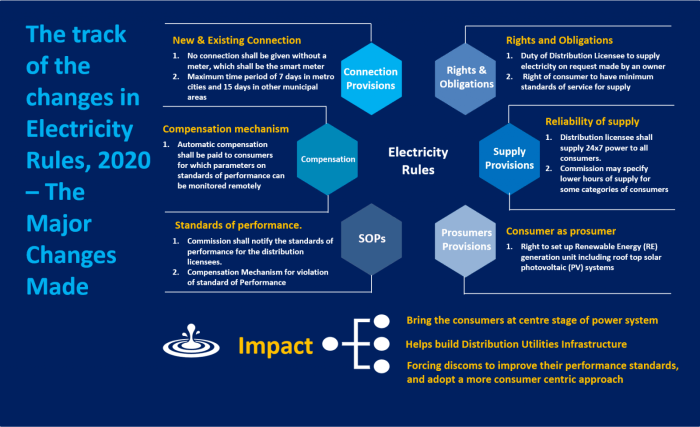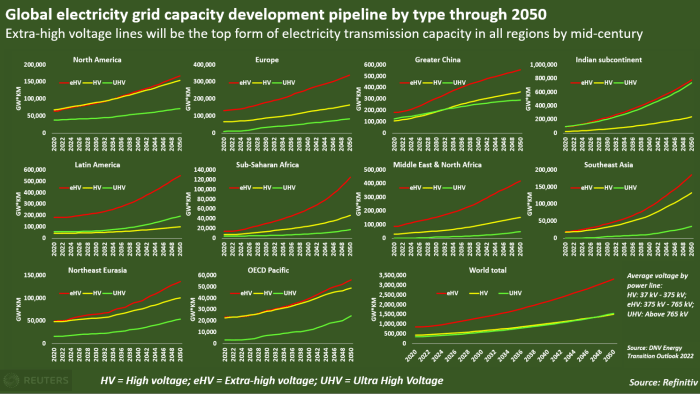
The world’s electricity grids are undergoing a profound transformation, driven by factors like climate change, technological advancements, and evolving energy demands. This shift necessitates a comprehensive understanding of the regulatory frameworks that govern these vital infrastructure systems. From the traditional centralized grids to the emerging decentralized and microgrid models, each region has its unique approach to electricity grid management. This exploration delves into the complexities of electricity grid regulations globally, examining the diverse regulatory landscapes, key challenges, and emerging trends shaping the future of power generation and distribution.
This article examines the intricate web of regulations that guide the global electricity grid, exploring the key players, regulatory approaches, and challenges faced in navigating this complex landscape. We will delve into the diverse models of grid architecture, the role of international collaboration, and the impact of technological advancements on the regulatory landscape.
Global Electricity Grid Landscape

The global electricity grid is a complex and ever-evolving system that delivers power to billions of people worldwide. Understanding the different types of grids and their interconnections is crucial for navigating the challenges and opportunities presented by the transition to a more sustainable and resilient energy future.
Centralized Grids
Centralized grids are the traditional model for electricity generation and distribution. They typically rely on large, centralized power plants, often fueled by fossil fuels, to generate electricity, which is then transmitted over long distances to consumers through a network of high-voltage transmission lines. These grids are characterized by their high capacity and efficiency in delivering power to a large number of consumers.
- Example: The North American Electric Reliability Corporation (NERC) grid is a vast interconnected network spanning the United States and parts of Canada, with a capacity of over 1 million megawatts. This grid relies on a mix of power plants, including coal, natural gas, nuclear, and hydroelectric, to meet the demands of millions of consumers.
Decentralized Grids
Decentralized grids, also known as distributed grids, are characterized by a greater reliance on smaller, distributed power generation sources, such as solar panels, wind turbines, and micro-hydroelectric plants. These sources are typically located closer to consumers, reducing transmission losses and enhancing grid resilience. Decentralized grids often incorporate advanced technologies like smart grids and energy storage systems to manage power flows and ensure reliable electricity supply.
- Example: Germany’s Energiewende, or energy transition, is a prime example of a decentralized grid approach. The country has significantly increased its reliance on renewable energy sources, particularly solar and wind power, and has invested heavily in smart grid technologies to integrate these sources into the grid.
Microgrids
Microgrids are small, localized grids that can operate independently from the main grid. They typically consist of a mix of distributed generation sources, energy storage systems, and load management technologies. Microgrids offer several advantages, including increased energy independence, improved reliability during grid outages, and the ability to integrate local renewable energy resources.
- Example: The University of California, Berkeley, operates a microgrid that serves its campus, providing a reliable source of power even during grid outages. The microgrid integrates solar panels, battery storage, and a combined heat and power plant to meet the campus’s energy needs.
Interconnections between Grids
Interconnections between electricity grids in different countries and regions play a crucial role in enhancing grid reliability, facilitating cross-border trade in electricity, and promoting the integration of renewable energy resources. Interconnections allow countries to share surplus power and provide backup during emergencies, while also enabling the development of regional energy markets.
- Example: The European Union’s Internal Energy Market (IEM) promotes cross-border electricity trade and grid interconnections between member states. This interconnection facilitates the flow of renewable energy from countries with abundant resources, such as Germany and Denmark, to countries with limited renewable energy potential.
Regulatory Frameworks for Electricity Grids

The electricity grid is a complex and essential infrastructure that powers modern society. Its regulation is crucial to ensure its reliability, efficiency, and safety. Regulatory frameworks for electricity grids vary significantly across the globe, reflecting different economic, political, and historical contexts. This section will explore key aspects of these frameworks, focusing on the roles of regulatory bodies, market structures, pricing mechanisms, grid security, and the impact of international agreements.
Key Regulatory Bodies and Agencies
Regulatory bodies play a vital role in overseeing the electricity grid, ensuring its efficient operation and fair competition within the sector. These agencies are responsible for setting rules, issuing licenses, monitoring performance, and resolving disputes.
- In the United States, the Federal Energy Regulatory Commission (FERC) oversees interstate electricity transmission and wholesale markets, while state-level public utility commissions regulate retail electricity markets.
- In the European Union, the European Network of Transmission System Operators for Electricity (ENTSO-E) coordinates cross-border electricity transmission, while individual member states have their own national regulatory bodies.
- In China, the National Energy Administration (NEA) is the primary regulatory body for the electricity sector, responsible for setting policies, approving projects, and overseeing market operations.
- In India, the Central Electricity Regulatory Commission (CERC) regulates the interstate transmission and wholesale electricity market, while state-level regulatory commissions oversee retail markets.
Comparison of Regulatory Frameworks
Regulatory frameworks for electricity grids vary across different regions, reflecting diverse approaches to market structure, pricing mechanisms, and grid security.
- Market Structure: Some regions, like the United States and the European Union, have adopted competitive wholesale electricity markets where generators compete to sell electricity to retailers, who then sell it to consumers. Other regions, like China, have more centralized market structures with a dominant role for state-owned enterprises.
- Pricing Mechanisms: Different regions employ different pricing mechanisms for electricity. Some regions use spot markets, where prices fluctuate based on supply and demand in real-time. Other regions use contracts for differences (CfDs), which provide generators with a fixed price for their electricity production, reducing price volatility.
- Grid Security: Grid security is a critical concern for regulators worldwide. Regulatory frameworks often include provisions for cybersecurity, physical security, and resilience against natural disasters. For example, the North American Electric Reliability Corporation (NERC) sets standards for grid security in the United States and Canada.
Impact of International Agreements and Standards
International agreements and standards play a crucial role in shaping grid regulations, promoting interoperability, and fostering cooperation across borders.
- The International Electrotechnical Commission (IEC) develops international standards for electrical equipment and systems, including those used in electricity grids. These standards help ensure compatibility and safety in a globalized electricity market.
- The International Energy Agency (IEA) promotes international cooperation on energy issues, including electricity grid development and security. The IEA’s recommendations and guidelines influence grid regulations in many countries.
- Regional organizations like the European Union and the North American Electric Reliability Corporation (NERC) also play a significant role in coordinating grid regulations and promoting interoperability across borders.
Final Thoughts

As the world transitions towards a more sustainable and resilient energy future, the role of electricity grid regulations becomes increasingly crucial. The challenges and opportunities presented by the evolving grid landscape require a collaborative approach, with regulators, policymakers, and industry stakeholders working together to ensure a secure, reliable, and affordable electricity supply for all. By fostering innovation, embracing emerging technologies, and promoting international cooperation, we can navigate the complexities of global electricity grid regulations and pave the way for a brighter, more sustainable energy future.
FAQ Corner
What are the main types of electricity grids?
The primary types of electricity grids include centralized grids, which are large, interconnected systems serving vast populations; decentralized grids, characterized by smaller, localized systems with greater autonomy; and microgrids, which are small, localized grids that can operate independently or connect to the main grid.
How do international agreements impact grid regulations?
International agreements, such as those related to climate change and renewable energy, often influence grid regulations by setting targets, promoting best practices, and encouraging cross-border cooperation.
What are the challenges associated with integrating renewable energy into existing grids?
Integrating renewable energy sources, like solar and wind power, into existing grids presents challenges related to intermittency, grid stability, and balancing supply and demand.
What is the role of grid regulations in promoting energy efficiency?
Grid regulations can promote energy efficiency through measures like smart metering, demand-side management programs, and incentives for energy-efficient technologies.